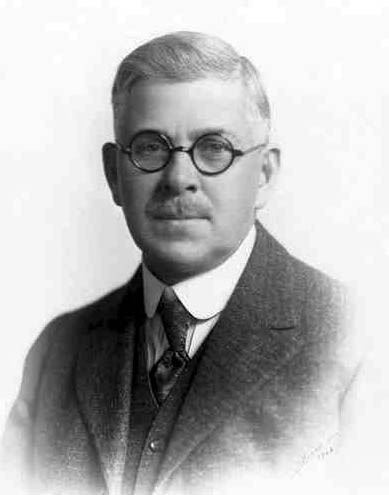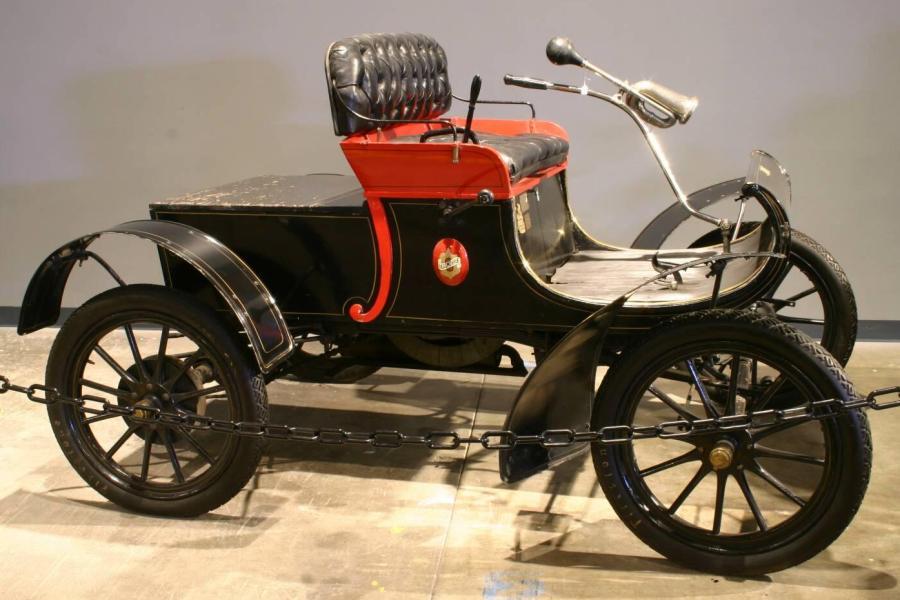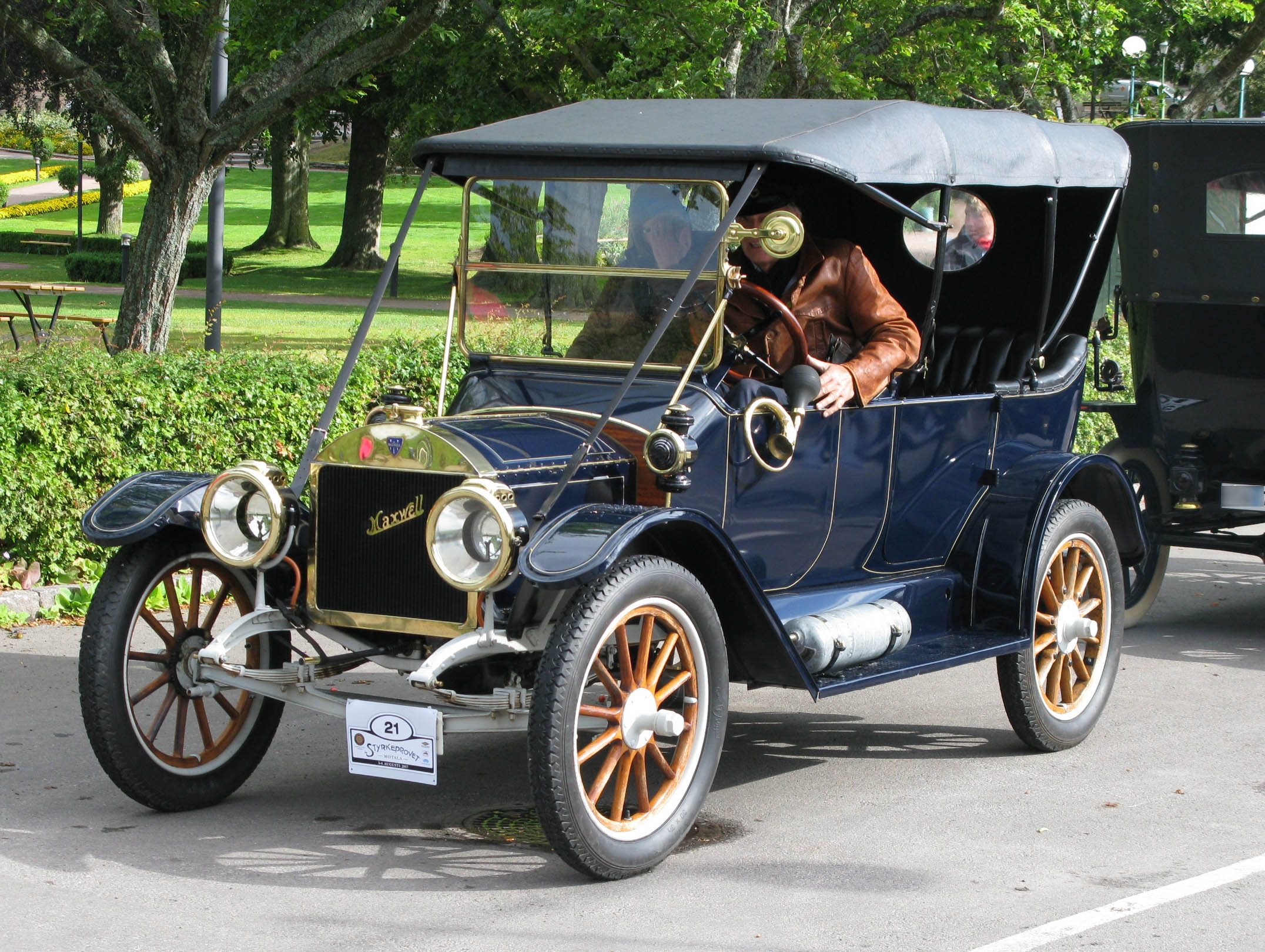|
Oldsmobile Model 30
The Oldsmobile Model 30, which continued to be known as the Oldsmobile Six, was built from the 1923 through 1927. Each year it was built, it was given the suffix 30-A, 30-B, 30-C, 30-D and 30-E for the last year of production, all having been manufactured in Lansing, Michigan. General Motors used the GM A platform, shared with the Buick Standard Six and the Oakland Six, and the yearly changes were the result of a new business philosophy called planned obsolescence. The Model 30 was Oldsmobile mid-level product and introduced the flathead Oldsmobile straight-6 engine, while the Oldsmobile Model 43 with a four cylinder engine remained the entry level product. When the top level Oldsmobile Light Eight, with the flathead Oldsmobile V8 engine was cancelled in 1923, the Oldsmobile Six became the top level vehicle. It replaced the Oldsmobile Model 37 introduced in 1917, and was replaced by the Oldsmobile F-Series introduced in 1928. In 5 years, 236,474 cars were built. The growing pop ... [...More Info...] [...Related Items...] OR: [Wikipedia] [Google] [Baidu] |
Oldsmobile
Oldsmobile or formally the Oldsmobile Division of General Motors was a brand of American automobiles, produced for most of its existence by General Motors. Originally established as "Olds Motor Vehicle Company" by Ransom E. Olds in 1897, it produced over 35 million vehicles, including at least 14 million built at its Lansing, Michigan factory alone. During its time as a division of General Motors, Oldsmobile slotted into the middle of GM's five (passenger car) divisions (above Chevrolet and Pontiac, but below Buick and Cadillac), and was noted for several groundbreaking technologies and designs. Oldsmobile's sales peaked at over one million annually from 1983 to 1986, but by the 1990s the division faced growing competition from premium import brands, and sales steadily declined. When it shut down in 2004, Oldsmobile was the oldest surviving American automobile marque, and one of the oldest in the world, after Mercedes-Benz, Peugeot, Renault, Fiat, Opel, Autocar and Tatra (i ... [...More Info...] [...Related Items...] OR: [Wikipedia] [Google] [Baidu] |
Oldsmobile Vehicles
Oldsmobile or formally the Oldsmobile Division of General Motors was a brand of American automobiles, produced for most of its existence by General Motors. Originally established as "Olds Motor Vehicle Company" by Ransom E. Olds in 1897, it produced over 35 million vehicles, including at least 14 million built at its Lansing, Michigan factory alone. During its time as a division of General Motors, Oldsmobile slotted into the middle of GM's five (passenger car) divisions (above Chevrolet and Pontiac, but below Buick and Cadillac), and was noted for several groundbreaking technologies and designs. Oldsmobile's sales peaked at over one million annually from 1983 to 1986, but by the 1990s the division faced growing competition from premium import brands, and sales steadily declined. When it shut down in 2004, Oldsmobile was the oldest surviving American automobile marque, and one of the oldest in the world, after Mercedes-Benz, Peugeot, Renault, Fiat, Opel, Autocar and Tatra (init ... [...More Info...] [...Related Items...] OR: [Wikipedia] [Google] [Baidu] |
Chevrolet Superior
The Chevrolet Superior Series F was launched in 1923, manufactured by Chevrolet for four years with a different series per year. The 1923 model was known as the Series B, the 1924 model was the Series F, for 1925 it was known as the Series K and the 1926 Superior was known as the Series V. It was replaced in 1927 by the Series AA Capitol. It was the first Chevrolet that didn't have a larger companion model and was the only car sold by Chevrolet in several body style configurations all supplied by Fisher Body. Each year new mechanical changes, appearance updates or optional features that became standard in subsequent years became expected of all GM products including Chevrolet. Body styles were separated into open and closed which meant closed included retractable glass in the doors and glass surrounding rear seat passengers. Standard items included tools, a jack for tire removal, speedometer, outside lockable door handles, ammeter, oil pressure gauge, dashboard light, choke pull ... [...More Info...] [...Related Items...] OR: [Wikipedia] [Google] [Baidu] |
Cadillac Type V-63
The Cadillac V-63 is a large luxury automobile that was introduced in September 1923 by Cadillac as a 1924 model, replacing the previous Type 61. It used the GM C platform and was replaced by the Cadillac Series 355 in 1931. It retained the name Cadillac V8 introduced with the previous generation Cadillac Type 51. The V-63 used an improved version of the L-head V8 engine that made Cadillac famous. The main innovation was a cross-plane crankshaft which improved balance and smoothness. This design required complex mathematical analysis, and was simultaneously patented by Peerless. Both companies agreed to share the innovation, which became a market distinction being able to exclusively offer a V8. For model year 1924, the Packard Eight straight-eight was now a competitor due to its reduced vibration. The body style choices were expanded to 14 while commercial applications weren't offered. New innovations included the availability of Balloon tires mounted on either wire wheels o ... [...More Info...] [...Related Items...] OR: [Wikipedia] [Google] [Baidu] |
DuPont (1802–2017)
DuPont de Nemours, Inc., commonly shortened to DuPont, is an American multinational chemical company first formed in 1802 by French-American chemist and industrialist Éleuthère Irénée du Pont de Nemours. The company played a major role in the development of Delaware and first arose as a major supplier of gunpowder. DuPont developed many polymers such as Vespel, neoprene, nylon, Corian, Teflon, Mylar, Kapton, Kevlar, Zemdrain, M5 fiber, Nomex, Tyvek, Sorona, Corfam and Lycra in the 20th century, and its scientists developed many chemicals, most notably Freon (chlorofluorocarbons), for the refrigerant industry. It also developed synthetic pigments and paints including ChromaFlair. In 2015, DuPont and the Dow Chemical Company agreed to a reorganization plan in which the two companies would merge and split into three. As a merged entity, DuPont simultaneously acquired Dow and renamed itself to DowDuPont on August 31, 2017, and after 18 months spin off the merged entity's ma ... [...More Info...] [...Related Items...] OR: [Wikipedia] [Google] [Baidu] |
Duco
Duco was a trade name assigned to a product line of automotive lacquer developed by the DuPont Company in the 1920s. Under the Duco brand, DuPont introduced the first quick drying multi-color line of nitrocellulose lacquers made especially for the automotive industry. It was also used in paintings by American artist Jackson Pollock. It is now used by Nexa Autocolor — formerly ICI Autocolor and now a division of Pittsburgh-based PPG Industries — as a tradename for automotive enamels in Asia. ''Duco'' is still used as an Australian colloquialism for automotive paint. It is currently widely used in the same way in Egypt (دوكو). It was (and partly still is) used in Hungarian as ''dukkó'' (noun) and ''dukkóz'' (verb). Also in Romania the term was in use with the same meaning until beginning of 2000. Duco was the finish applied to National String Instrument Corporation brand of resonator guitars . ''Duco coated'' is used in the plumbing industry to describe lac ... [...More Info...] [...Related Items...] OR: [Wikipedia] [Google] [Baidu] |
Touring Car
Touring car and tourer are both terms for open cars (i.e. cars without a fixed roof). "Touring car" is a style of open car built in the United States which seats four or more people. The style was popular from the early 1900s to the 1930s. The cars used for touring car racing in various series since the 1960s, are unrelated to these early touring cars, despite sharing the same name. "Tourer" is used in British English for any open car. The term "all-weather tourer" was used to describe convertibles (vehicles that could be fully enclosed). A popular version of the tourer was the torpedo, with the hood/bonnet line at the car's waistline giving the car a straight line from front to back. Touring car (U.S.) Design ''Touring car'' was applied in the U.S. to open cars (cars without a fixed roof, for example convertibles) that seat four or more people and have direct entrance to the tonneau (rear passenger area), although it has also been described as seating five or more people. ... [...More Info...] [...Related Items...] OR: [Wikipedia] [Google] [Baidu] |
Multi-cylinder Engine
The engine configuration describes the fundamental operating principles by which internal combustion engines are categorized. Piston engines are often categorized by their cylinder layout, valves and camshafts. Wankel engines are often categorized by the number of rotors present. Gas turbine engines are often categorized into turbojets, turbofans, turboprops and turboshafts. Piston engines Piston engines are usually designed with the cylinders in lines parallel to the crankshaft. It is called a straight engine (or 'inline engine') when the cylinders arranged in a single line. Where the cylinders are arranged in two or more lines (such as in V engines or flat engines), each line of cylinders is referred to as a 'cylinder bank'. The angle between cylinder banks is called the 'bank angle'. Engines with multiple banks are shorter than straight engines and can be designed to cancel out the unbalanced forces from each bank, in order to reduce the vibration. Most engines with fou ... [...More Info...] [...Related Items...] OR: [Wikipedia] [Google] [Baidu] |
Automotive Industry In The United States
The automotive industry in the United States began in the 1890s and, as a result of the size of the domestic market and the use of mass production, rapidly evolved into the largest in the world. The United States was the first country in the world to have a mass market for vehicle production and sales and is a pioneer of the automotive industry and mass market production process. During the course of the 20th century global competitors emerged especially in the second half of the century primarily across European and Asian markets, such as Germany, France, Italy, Japan and South Korea. The U.S. is currently second among the largest manufacturer(s) in the world by volume. American manufacturers produce approximately 10 million units annually. Notable exceptions were 5.7 million automobiles manufactured in 2009 (due to crisis), and more recently 8.8 million units in 2020 due to the global COVID-19 pandemic. While production peaked during the 1970s and early 2000s at levels of 1 ... [...More Info...] [...Related Items...] OR: [Wikipedia] [Google] [Baidu] |
Oldsmobile V8 Engine
The Oldsmobile V8, also referred to as the Rocket, is series of engines that was produced by Oldsmobile from 1949 until 1990. The Rocket, along with the 1949 Cadillac V8, were the first post-war OHV crossflow cylinder head V8 engines produced by General Motors. Like all other GM divisions, Olds continued building its own V8 engine family for decades, adopting the corporate Chevrolet 350 small-block and Cadillac Northstar engine only in the 1990s. All Oldsmobile V8s were manufactured at plants in Lansing, Michigan while the engine block and cylinder heads were cast at Saginaw Metal Casting Operations. All Oldsmobile V8s use a 90° bank angle, and most share a common stroke dimension: for early Rockets, for later Generation 1 engines, and for Generation 2 starting in 1964. The , , , and engines are commonly called small-blocks.''Hot Rod'', 3/86, p.54. , , and V8s have a higher deck height ( ''versus'' ) to accommodate a stroke crank to increase displacement. These taller-de ... [...More Info...] [...Related Items...] OR: [Wikipedia] [Google] [Baidu] |
Flathead Engine
A flathead engine, also known as a sidevalve engine''American Rodder'', 6/94, pp.45 & 93. or valve-in-block engine is an internal combustion engine with its poppet valves contained within the engine block, instead of in the cylinder head, as in an overhead valve engine. Flatheads were widely used internationally by automobile manufacturers from the late 1890s until the mid-1950s but were replaced by more efficient overhead valve and overhead camshaft engines. They are currently experiencing a revival in low-revving aero-engines such as the D-Motor. The side-valve design The valve gear comprises a camshaft sited low in the cylinder block which operates the poppet valves via tappets and short pushrods (or sometimes with no pushrods at all). The flathead system obviates the need for further valvetrain components such as lengthy pushrods, rocker arms, overhead valves or overhead camshafts. The sidevalves are typically adjacent, sited on one side of the cylinder(s), though some ... [...More Info...] [...Related Items...] OR: [Wikipedia] [Google] [Baidu] |







_on_display.jpg)
.jpg)